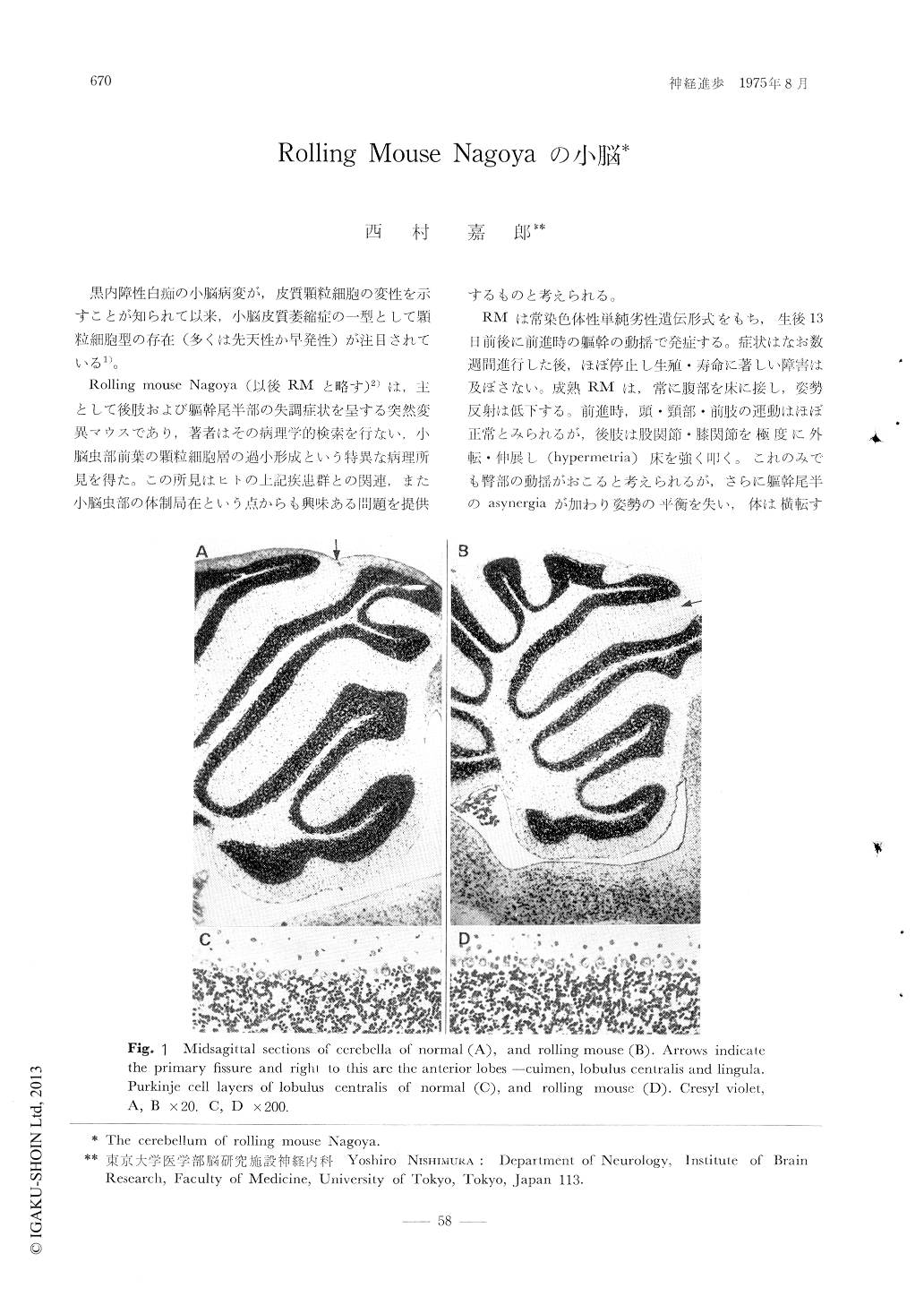Japanese
English
特集 第10回脳のシンポジウム
Ⅰ.小脳症状・1
4.小脳正中部—再び生理学的解釈について—Rolling Mouse Nagoyaの小脳
The cerebellum of rolling mouse Nagoya
西村 嘉郎
1
Yoshiro NISHIMURA
1
1東京大学医学部脳研究施設神経内科
1Department of Neurology, Institute of Brain Research, Faculty of Medicine, University of Tokyo
pp.670-672
発行日 1975年8月10日
Published Date 1975/8/10
DOI https://doi.org/10.11477/mf.1431903753
- 有料閲覧
- Abstract 文献概要
- 1ページ目 Look Inside
黒内障性白痴の小脳病変が,皮質顆粒細胞の変性を示すことが知られて以来,小脳皮質萎縮症の一型として顆粒細胞型の存在(多くは先天性か早発性)が注目されている1)。
Rolling mouse Nagoya(以後RMと略す)2)は,主として後肢および躯幹尾半部の失調症状を呈する突然変異マウスであり,著者はその病理学的検索を行ない,小脳虫部前葉の顆粒細胞層の過小形成という特異な病理所見を得た。この所見はヒトの上記疾患群との関連,また小脳虫部の体制局在という点からも興味ある問題を提供するものと考えられる。
Rolling mouse Nagoya was characterized by the clinical symptom of ataxia of the hindquarter and balancing difficulties seen first at 13 postnatal days. This mutant was due to an autosomal recessive gene. In the brain, macroscopically, the only change was that the anterior part of the cerebellum was smaller. Microscopically the cytoarchitecture of the cerebellar cortex were normal in the anterior lobe of the corpus cerebelli as well as the other lobes.

Copyright © 1975, Igaku-Shoin Ltd. All rights reserved.


